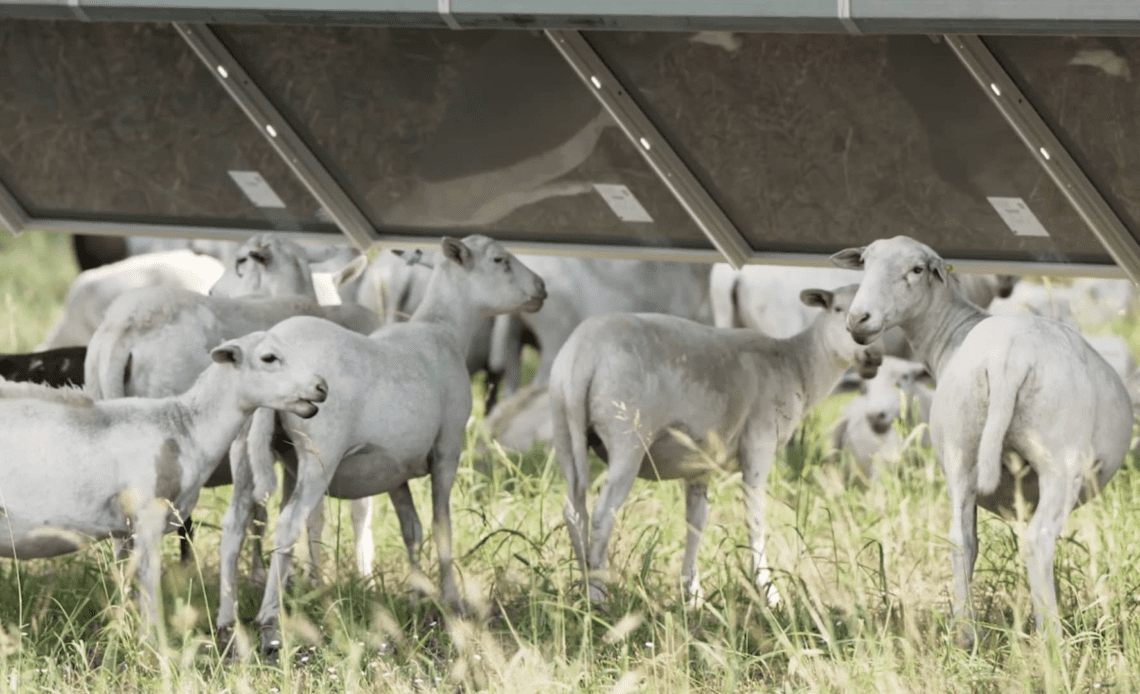At Elm Branch Solar Farm, about an hour south of Dallas, Texas, a flock of sheep grazes among a vast field of solar panels. The flock’s shepherd, Amanda Stoffels, watches over it as the sheep munch on the grass and nap in the shade provided by the panels.
Stoffels owns this land, but leases it to Lightsource BP, a major solar energy developer that’s 50% owned by British oil major BP. She earns a steady monthly income from the lease payments as well as through her grazing contract with Lightsource, which pays her to graze her sheep around the panels, thereby keeping vegetation in check.
“It’s a new, modern approach to agriculture,” Stoffels says. Her contracts with Lightsource allowed her to quit her 9 to 5 job to become a full-time shepherd.
An emerging industry called agrivoltaics combines solar energy production with agricultural activities such as sheep grazing, beekeeping and crop growing. This land management strategy could help alleviate the tension between farmers and solar developers, groups that often have competing land-use interests.
“Even though the United States is a very large country with a lot of available land, every single square inch of land is either owned, protected or cherished by someone or many people. And many people do not want to see that land change or transform into something different from what it has been,” explained Jordan Macknick, the Lead Energy-Water-Land Analyst for the National Renewable Energy Laboratory.
Agrivoltaic projects, Macknick says, could be a sort of compromise. “So agrivoltaics really offers us that opportunity to continue farming, continue doing these agricultural activities while also producing clean electricity.”
Amanda Stoffels feeds her flock of sheep at Elm Branch Solar Farm in Ellis County, Texas. Stoffels earns money by leasing her land to solar developer Lightsource BP and grazing her sheep around the panels.
Juhohn Lee
Crop growing on solar farms is still a nascent area of research and some farmers still have concerns.
“Solar takes some of the best land out of production because they want land that’s 1% to 4% slope,” explained Tom Koranek, a landowner and beekeeper who leases land to Lightsource and produces honey on the solar farm. That flat, treeless land is ideal for both solar panels and crop production, he says.
Still, agrivoltaic projects are as close to a win-win for farmers and solar developers as we currently have, and as the solar industry rapidly expands, experts say we can expect to see…
Click Here to Read the Full Original Article at Top News and Analysis (pro)…


